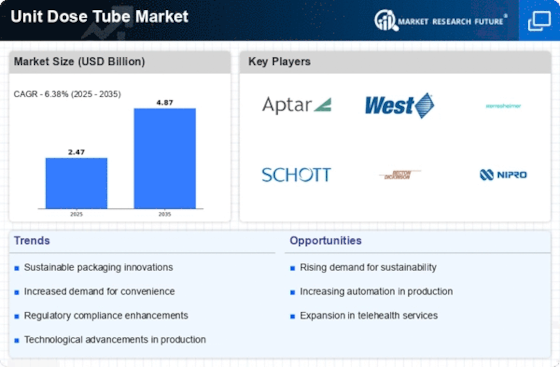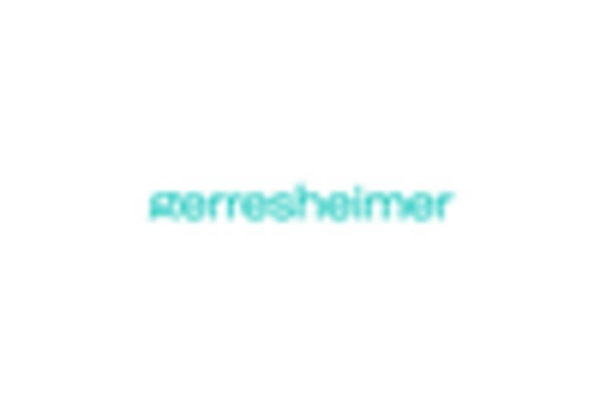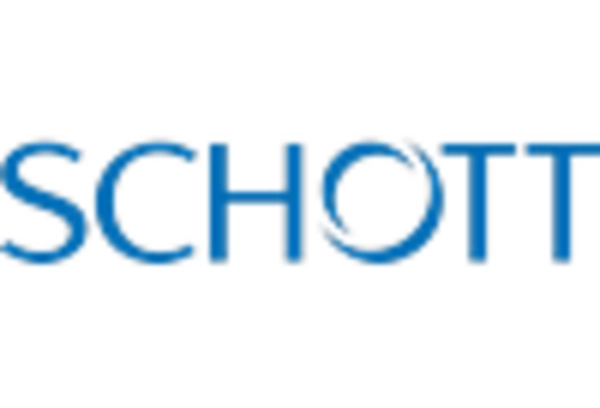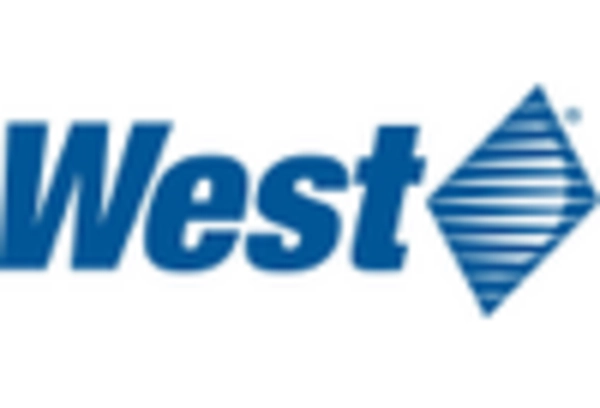Growing Aging Population
The growing aging population is a significant driver for the Unit Dose Tube Market. As the global demographic shifts towards an older population, the demand for healthcare services and medication management increases. Older adults often require multiple medications, making unit dose systems an attractive solution for ensuring proper dosing and adherence. This demographic trend is particularly pronounced in regions with higher life expectancy rates. The need for convenient and safe medication delivery systems is likely to drive the adoption of unit dose tubes among healthcare providers and patients alike. Consequently, the Unit Dose Tube Market stands to benefit from this demographic shift, as it aligns with the needs of an aging population.
Increasing Healthcare Expenditure
The Unit Dose Tube Market is experiencing growth due to rising healthcare expenditure across various regions. As governments and private sectors allocate more funds towards healthcare, the demand for efficient and safe medication delivery systems increases. This trend is particularly evident in developed nations, where healthcare budgets are expanding to accommodate advanced medical technologies. The emphasis on patient safety and medication adherence drives the adoption of unit dose systems, which minimize dosing errors and enhance patient outcomes. According to recent data, healthcare spending is projected to rise significantly, indicating a robust market potential for unit dose tubes. This financial commitment to healthcare infrastructure suggests a favorable environment for the Unit Dose Tube Market.
Rising Awareness of Medication Safety
Rising awareness of medication safety is influencing the Unit Dose Tube Market positively. Healthcare professionals and patients are increasingly recognizing the importance of safe medication practices. This heightened awareness is leading to a preference for unit dose systems, which are designed to minimize dosing errors and enhance patient compliance. Educational campaigns and initiatives by health organizations are further promoting the benefits of unit dose packaging. As stakeholders prioritize medication safety, the demand for unit dose tubes is expected to rise. This trend indicates a growing market potential for the Unit Dose Tube Market, as it aligns with the overarching goal of improving patient health outcomes.
Technological Advancements in Packaging
Technological advancements in packaging are reshaping the Unit Dose Tube Market. Innovations in materials and design are leading to the development of more efficient and user-friendly unit dose tubes. For instance, the introduction of tamper-evident features and child-resistant designs enhances safety and compliance. Furthermore, advancements in manufacturing processes allow for cost-effective production, which can lead to lower prices for consumers. The integration of smart technologies, such as QR codes for tracking and information dissemination, is also gaining traction. These developments not only improve the functionality of unit dose tubes but also align with the growing demand for high-quality packaging solutions in the pharmaceutical sector. As a result, the Unit Dose Tube Market is likely to benefit from these technological enhancements.
Regulatory Support for Unit Dose Systems
Regulatory support for unit dose systems is a crucial driver for the Unit Dose Tube Market. Various health authorities are increasingly endorsing unit dose packaging as a means to enhance medication safety and reduce errors. This regulatory backing encourages pharmaceutical companies to adopt unit dose tubes in their product offerings. For example, guidelines from health organizations advocate for unit dose systems to improve patient adherence and minimize the risk of medication mishaps. As regulations evolve to favor safer medication delivery methods, the Unit Dose Tube Market is poised for growth. The alignment of regulatory frameworks with industry practices suggests a promising future for unit dose systems.

















Leave a Comment